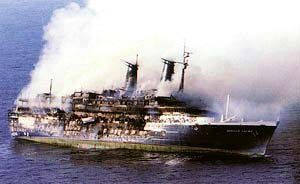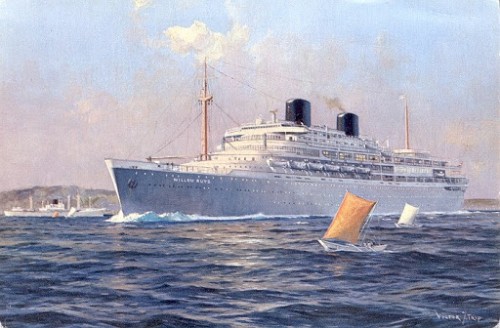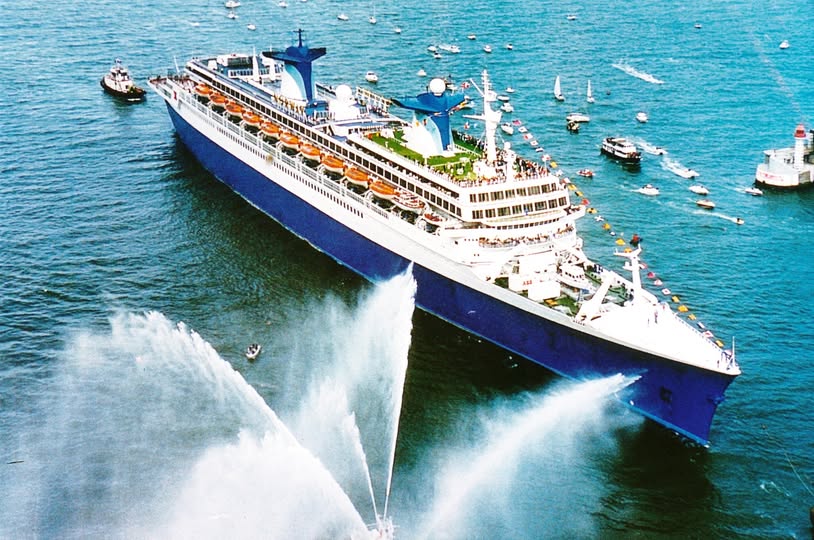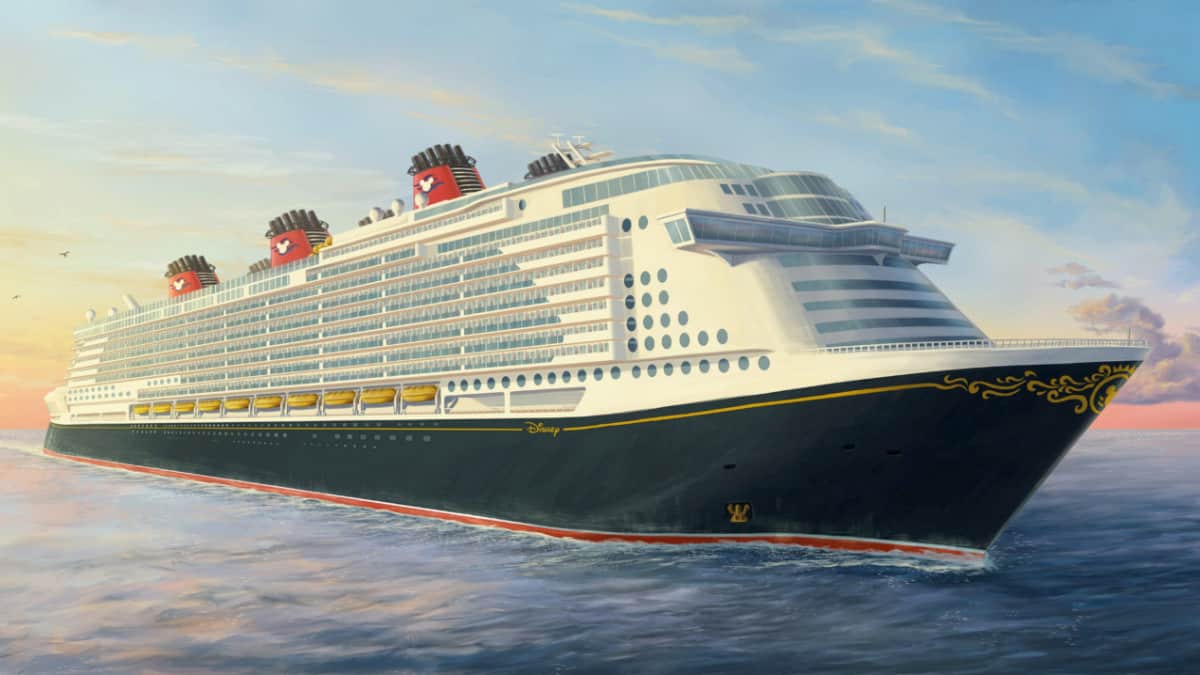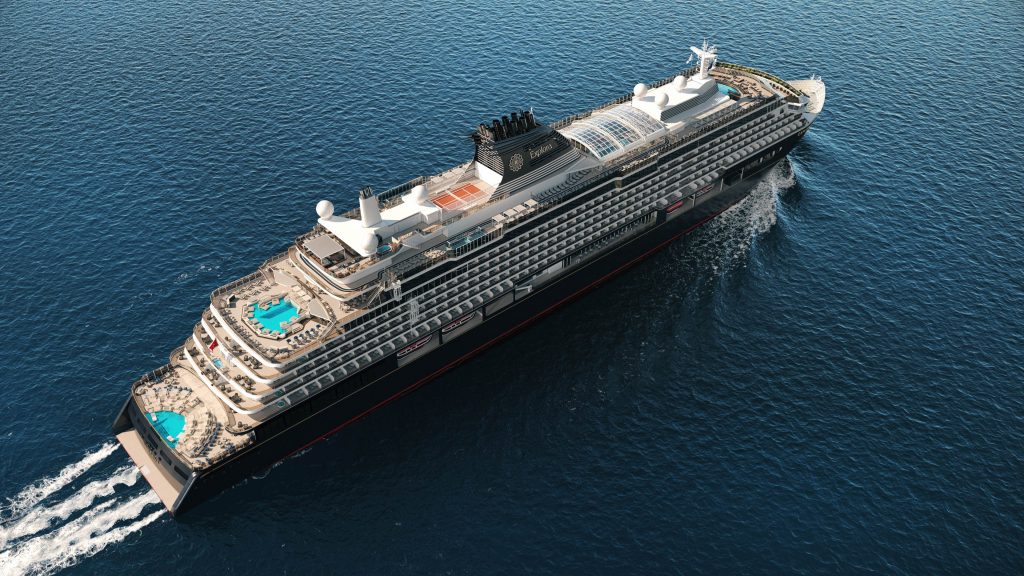She was ordered in 1938 from De Schelde shipyard in Vlissingen. Planning had already begun in 1935 because of a fleet renewal program. Her keel was laid in 1939 and construction started. Little did her owners Rotterdamsche Lloyd (Royal Rotterdam Lloyd) know it would take 8 years to complete her! Construction halted during World War II and despite that she was the target of bombers several times, she survived the war. At first she was attacked by German bombers, but after invasion of the Netherlands they decided to finish the ship for their own use.

However, sabotage by the Dutch resistance and later RAF bomber attacks made the Germans abandon the ship and she sat on the slipway until the war ended. Finally she took to the water in July 1946 and was named Willem Ruys. She was named after the grandson of the founder of the Royal Rotterdam Lloyd who was taken hostage and shot during the war by the Germans.

Finally Willem Ruys was completed in late 1947. Some data: she measured 21,120GRT, had a length of 192 metres, a beam of 25 metres and her draught was 8.9 metres. Her passenger carrying capacity was 900. Willem Ruys was of exceptional external design, quite different from other vessels constructed at the time. Her lifeboats were placed in recesses halfway up her sides. Nowadays this is common practice because if they are placed on the ships top decks, the distance lifeboats would have to travel before they would hit the water is just too long, and it would also be a problem lowering them from atop if the ship started to list. But in the days Willem Ruys was constructed it was normal practice to place them on one of the top decks. Willem Ruys was copied in this respect by ships like P&O’s Canberra in later years.

Willem Ruys started her maiden voyage on December 5 1947. Royal Rotterdam Lloyd soon teamed up with the Stoomvaart Maatschappij Nederland (Netherland Line) based in Amsterdam and their Oranje became her running mate on the Dutch East Indies route. The Oranje had made her inaugural voyage just before the war and had immediately proven to be a popular ship. So now both competitors Willem Ruys and Oranje sailed in tandem on the Netherlands – East Indies route. The East Indies had been a Dutch colony since the 17th century which ended in 1949.

After a quite uneventful period, disaster struck as on January 6 1953, Willem Ruys on her way home to Rotterdam collided in the Red Sea with Oranje which was sailing in the opposite direction. It was common practice for passenger ships to greet eachother at close range. It seemed that Oranje approached at high speed and it is said that she tried to steer clear of a tanker in these busy waters. Willem Ruys made an unexpected manoeuvre to port when she acted to avoid a collision, which failed. After the first hit, Willem Ruys was hit on her side which made her turn on her axis and hit Oranje again with her stern. Two holds of Willem Ruys were flooded but this was no problem as pumps could cope easily. Oranje ‘s bow was severely damaged and one storeroom had caught fire, so she asked Willem Ruys to stay in the vicinity just in case. The fire was put out quickly and both ships made it to port. It cost 1 million Dutch guilders to repair Willem Ruys who had a triangular hole two metres wide and three metres high in her side and a crack in her hull aft. Oranje was more severely damaged had had to spend two months at the yard for repairs. Later at the inquiries that followed, the master of Willem Ruys was cleared completely, but the master of Oranje was blamed for his evasive manoeuvre avoiding the tanker and of having acted “contrary to good seamanship”. He received a mild sentence and was banned from sailing for a week. Of course it was miscommunication on both ships which had contributed largely to the collision.



After she was repaired, Willem Ruys switched to the North Atlantic run to New York and later Canada. This was shortlived however and in 1958, the Royal Rotterdam Lloyd and the Netherland Line decided to start a joint around the world service. Willem Ruys would sail With Oranje and Johan van Oldenbarneveldt (also owned by Netherland Line) and was extensively refitted.

She received a hundred additional cabins and air conditioning throughout. Until then, she was a four class liner and now a start was made to converted her to a cuise ship. Not entirely, as she would continue in liner service and would still have two classes, First (275) and Tourist ( 770) (while cruise ships are single-class vessels). To increase passenger comfort stabilizers were fitted. Her outward profile did not change much, albeit that her forward funnel was heightened. She “grew” to 23,620GRT as a result of this refit.

On March 7 1959, Willem Ruys departed from Rotterdam on the new service which would take her via Southampton, the Mediterranean and the Suez Canal to Fremantle, Melbourne, Sydney and New Zealand before returning via the Panama Canal.

Although the three Dutch ships proved popular in the beginning of this venture and could easily compete with other liners on this route like those of P&O, in 1964 passenger levels had plummeted to such an extent (here also travellers switched to flying thus saving time) so Royal Rotterdam Lloyd had to withdraw Willem Ruys. She was laid up in her homeport of Rotterdam and put up for sale.
Before long she was sold to the Flotta Lauro Line, Italy and renamed Achille Lauro after the company’s owner and CEO. Shortly afterwards, Lauro also bought the Oranje and renamed her Angelina Lauro. Achille Lauro was extensively modernized (in the process she received a blue hull and her funnels were heightened) but this was interrupted by an on board explosion in August 1965 so she wasn’t back in service before 1966. Again, she found herself on the route to Australia and New Zealand. While operated on this service she made one of the last northbound transits through the Suez Canal before it closed during the Six-Day War (June 1967).
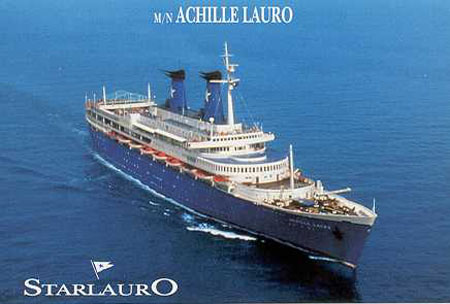
Achille Lauro was refitted again in early 1972 during which she was severely damaged by a fire. It took five months to repair her. At the end of 1972 her liner service ended and from then onwards, she sailed as a full-time cruise ship.
In her early cruising days in 1975 she collided with the Lebanese cattle carrier Youseff resulting in the sinking of Youseff. She suffered yet another fire in 1981 but was repaired once again.


She was detained in Tenerife, Canary Islands by the local authorities when Lauro Lines had not paid her port duties. Shortly afterwards Lauro went bankrupt in 1982. Then Chandris Line took possession of her under a charter arrangement in 1985 and she continued cruising.


In October 1985, four members of the Palestine Liberation Front took control of the liner off Egypt as she was sailing from Alexandria to Port Said. Half of her passengers had left the ship for an excursion overland to Port Said when the terrorists seized her. It was the first hijacking of a passenger ship in history. They made her sail to Tartus, Syria, and demanded the release of 50 Palestinians which were prisoners of war in Israeli prisons. After being refused permission to dock at Tartus, the hijackers showed they were serious by killing disabled Jewish-American passenger Leon Klinghoffer and then threw his body overboard. Achille Lauro now headed back towards Port Said, and after two days of negotiations, the hijackers agreed to abandon the liner in exchange for a safe passage to Tunisia aboard an Egyptian commercial airliner. The American government did not agree with this and had a US fighter plane intercept her and forced her to land in Sicily, where the hijackers were tried for murder by an Italian court and were sentenced to prison terms. The Egyptian government was offended by the American intervention and they retaliated by detaining the Achille Lauro for a week demanding an apology form the US before she was permitted to return to Genoa.
In 1987 Lauro Line was taken over by the Mediterranean Shipping Company and the company was renamed StarLauro. Achille Lauro now sailed on cruise after cruise until disaster struck. On November 30 1994, she caught fire while en route to South Africa off the coast of Somalia. At first, the fire was blamed on a cigarette butt being thrown overboard, later it became obvious that it actually began in the engine room because of an explosion.

Later all kind of reports appeared stating that the engine room of this now old ship was in a mediocre state to put it mildly because of lack of maintenance. Fire fighting procedures on board were not in place either and as a result of this and a lack of coordination during fire fighting the fire spread through the ship rapidly. She was abandoned and all 979 passengers and crew were transferred to rescue ships, including the USS Halyburton, During this operation two died. Having survived so many disasters Achille Lauro now ran out of luck and this great ship sank two days later on Dec 2, 1994…
